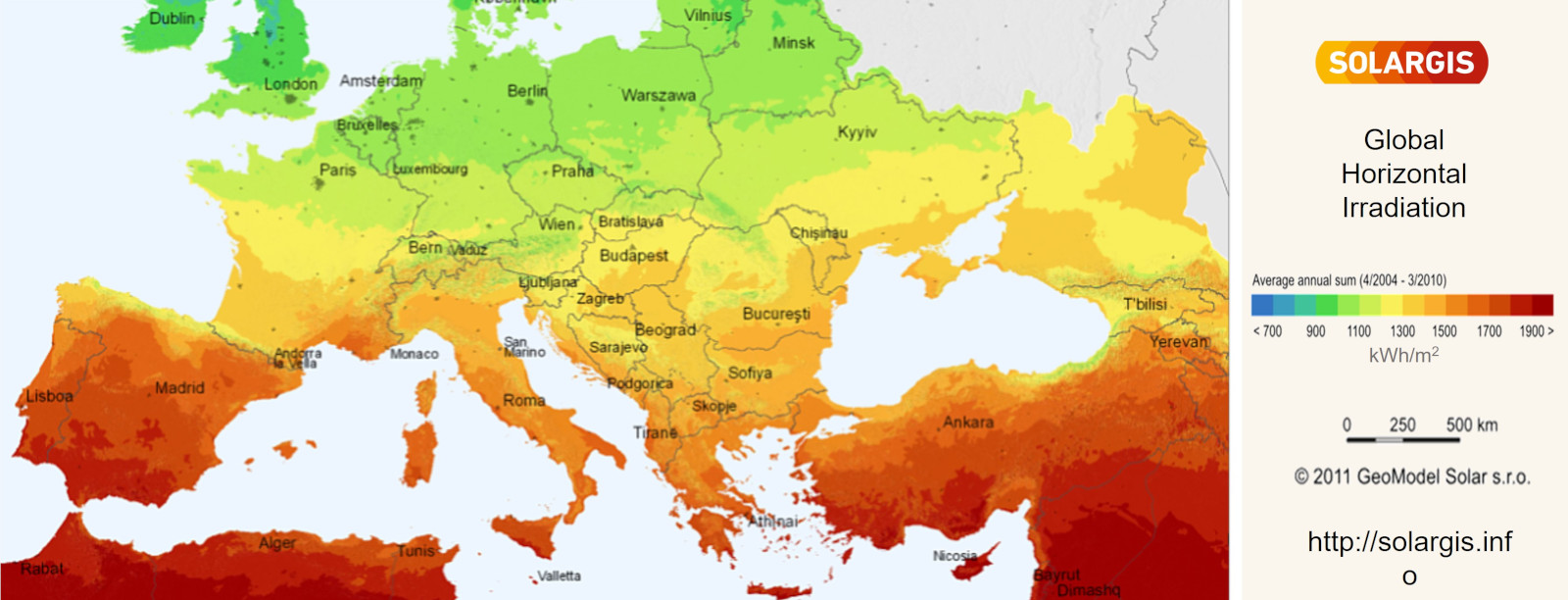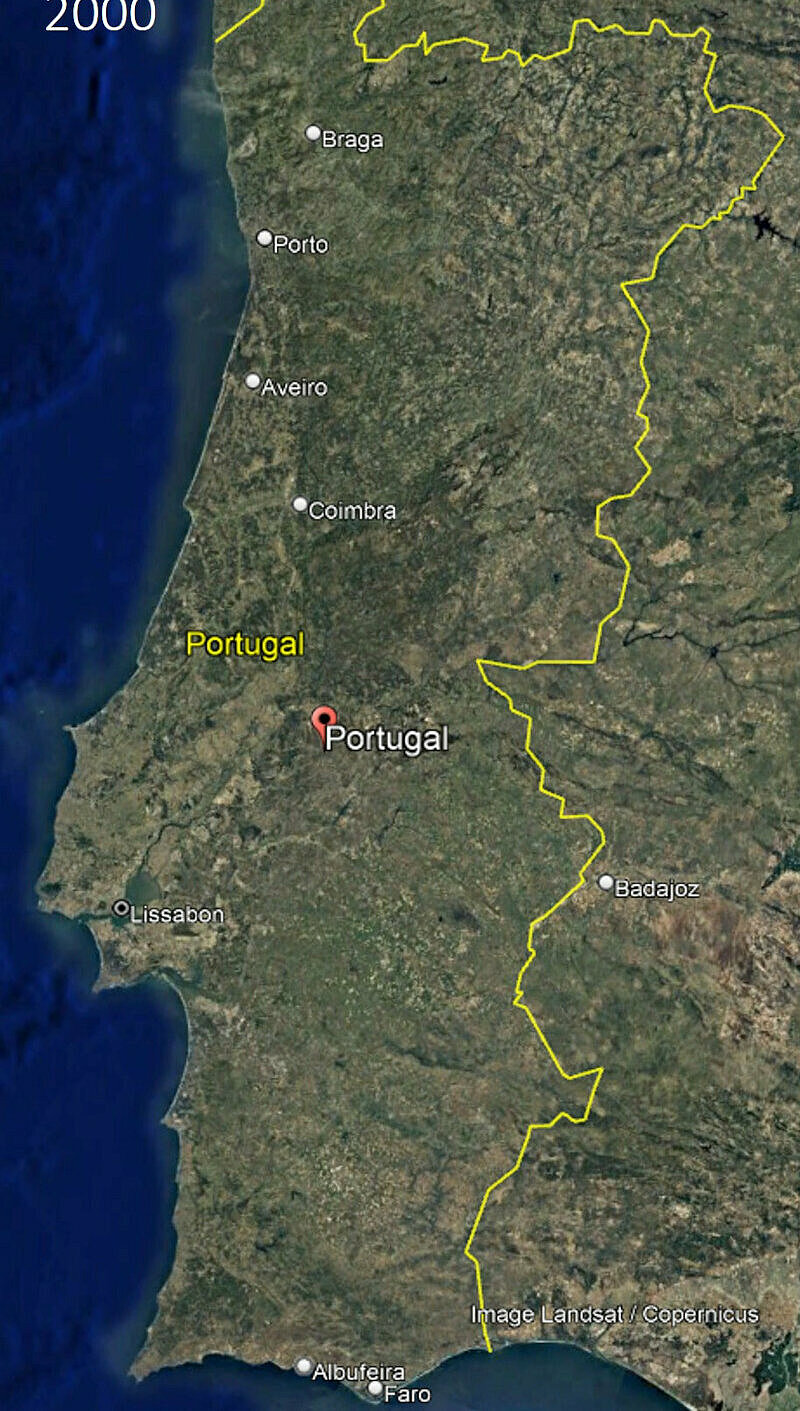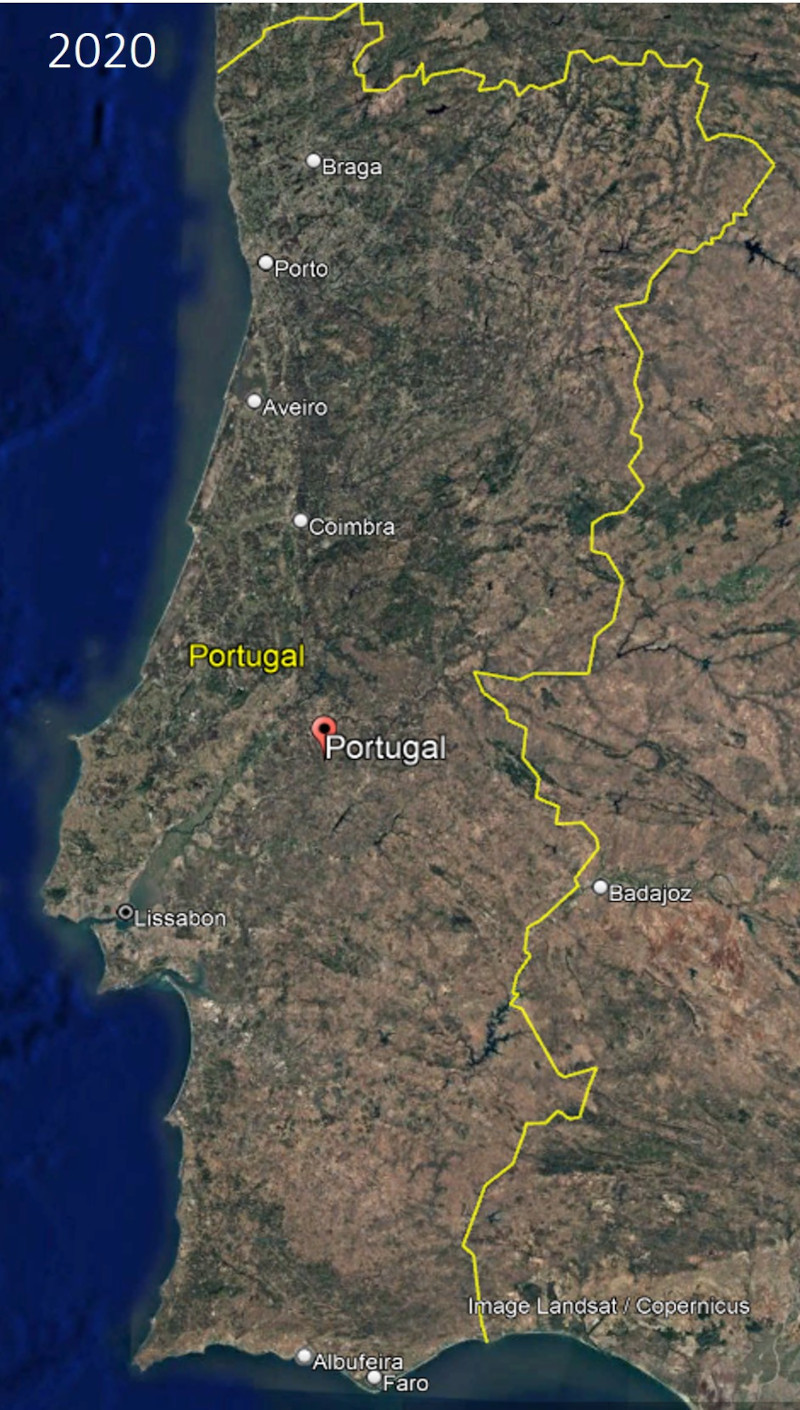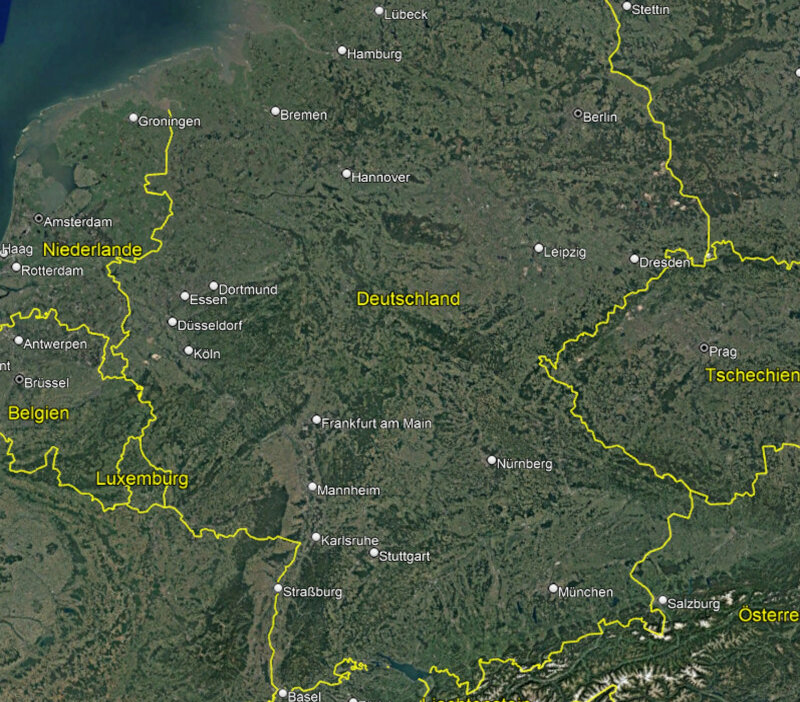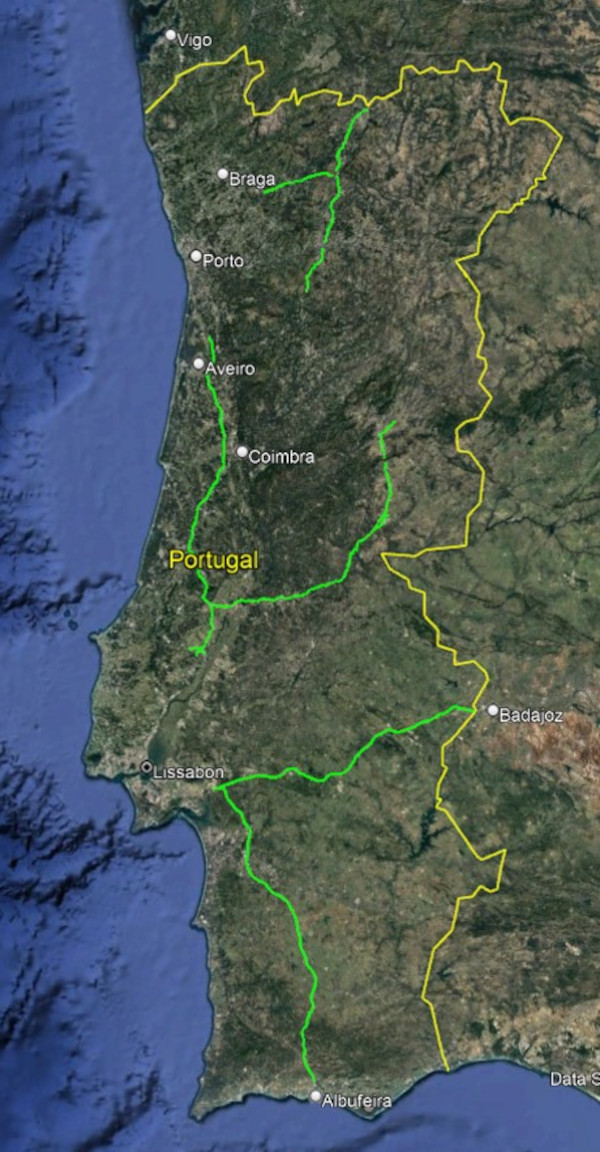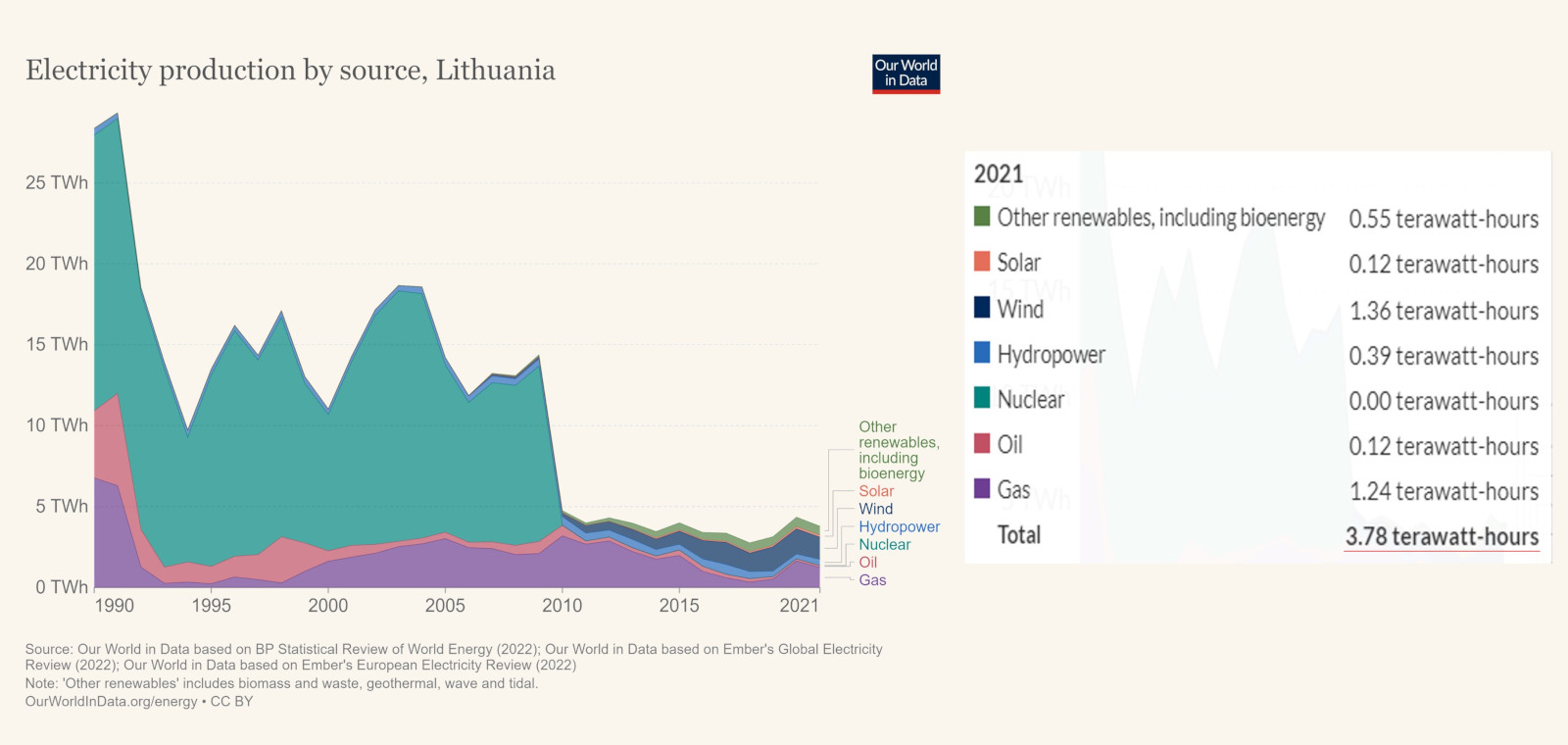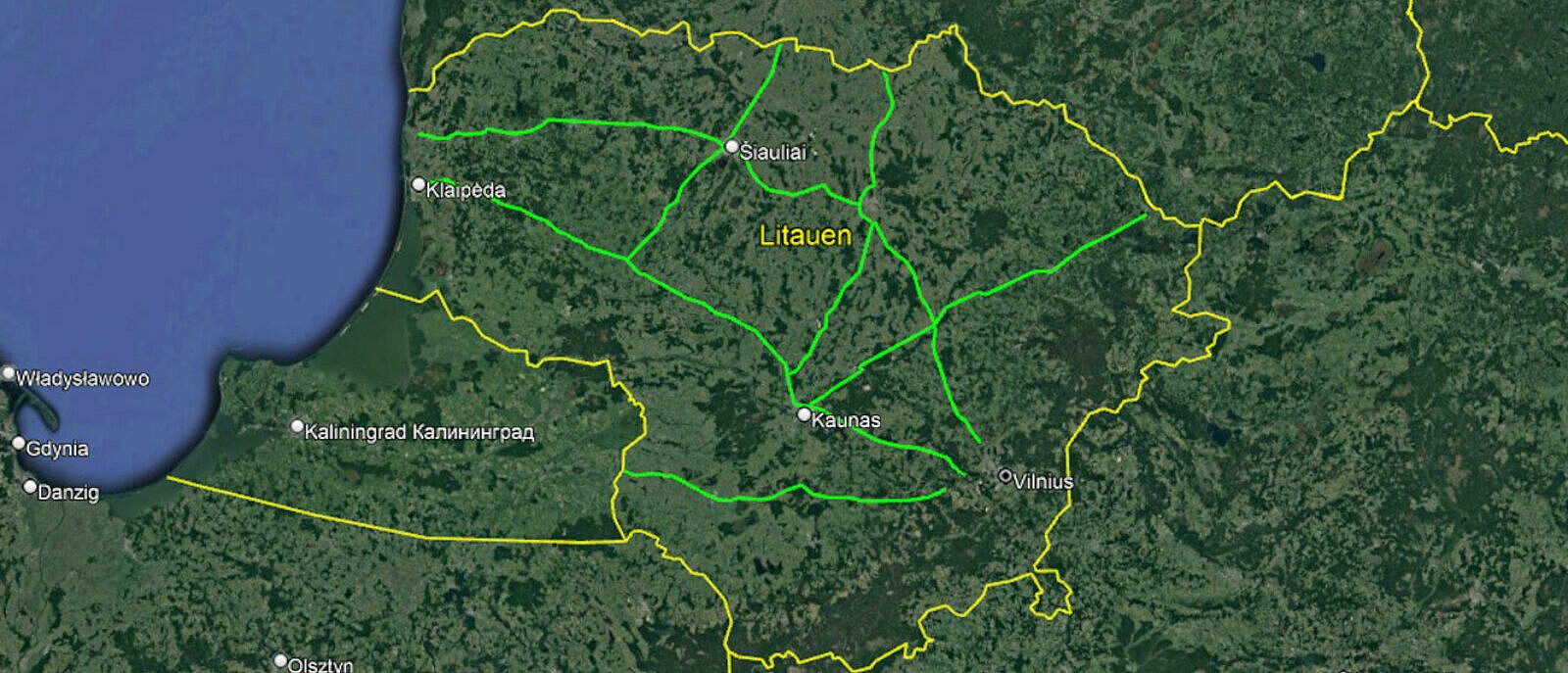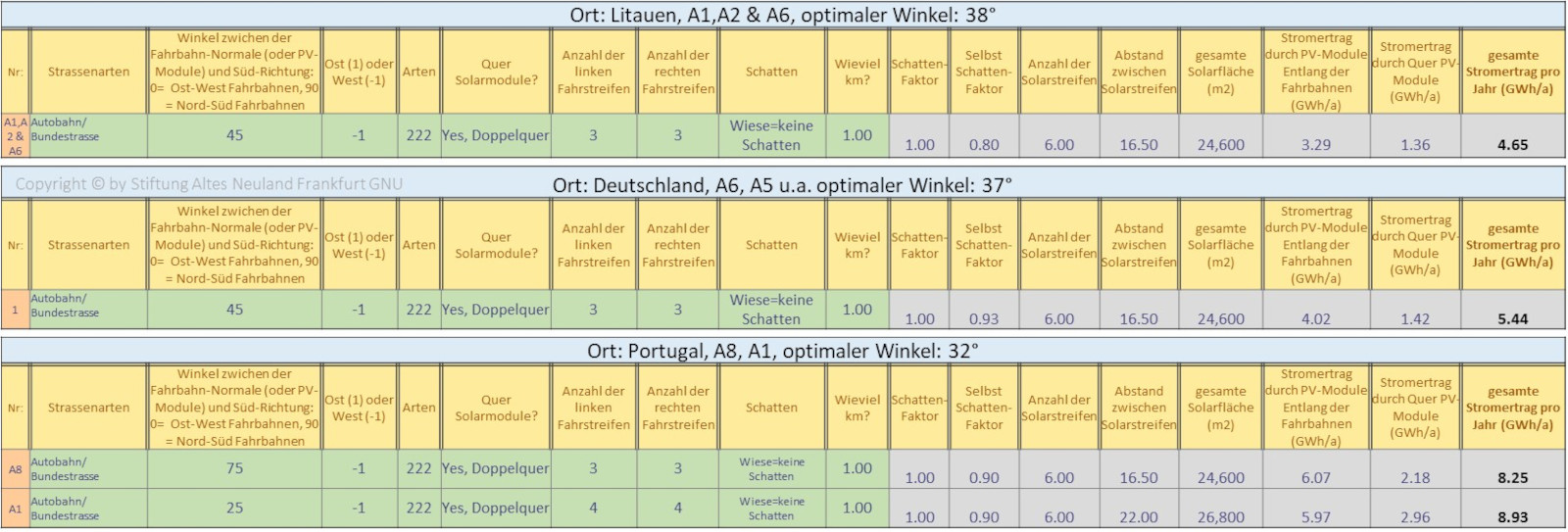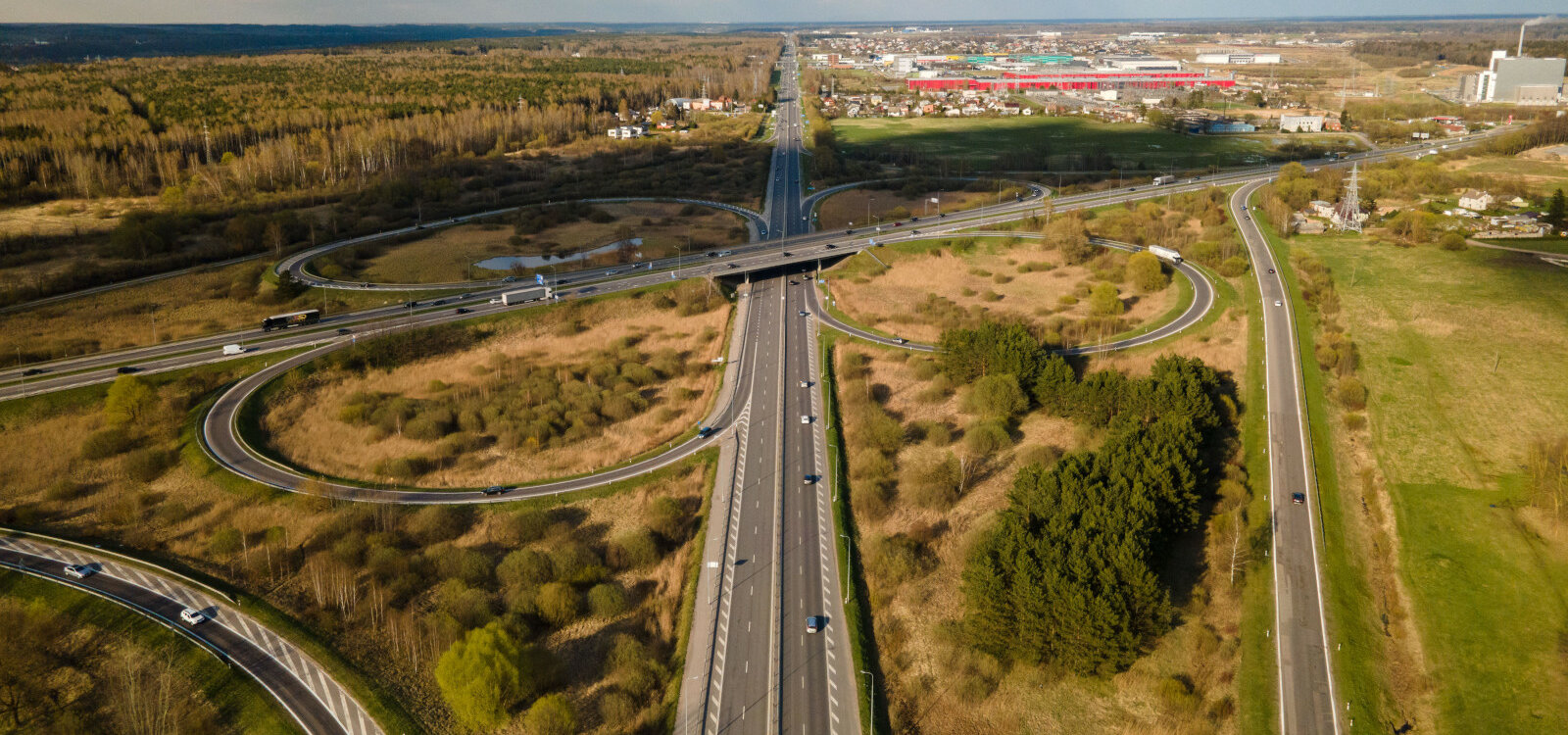Energy Bands in Portugal and Lithuania
The present study focuses on Germany, with a regional Energy Bands concept: A major advantage of Energy Bands is that they can be set up anywhere on a small scale and do not require a large construction project, which would be complex, slow and thus more expensive to implement due to its size.
The concept of Energy Bands can also be applied decentrally and comparatively easily and quickly in all other European countries: Large amounts of solar energy can be generated not only in the sunny south, but also in more northern areas of Europe.
However, even if at the beginning all Energy Bands are created in a decentralized manner according to demand and flexible in size and scope, in the long term they can be expected to grow together within countries and, over time, across national borders.


